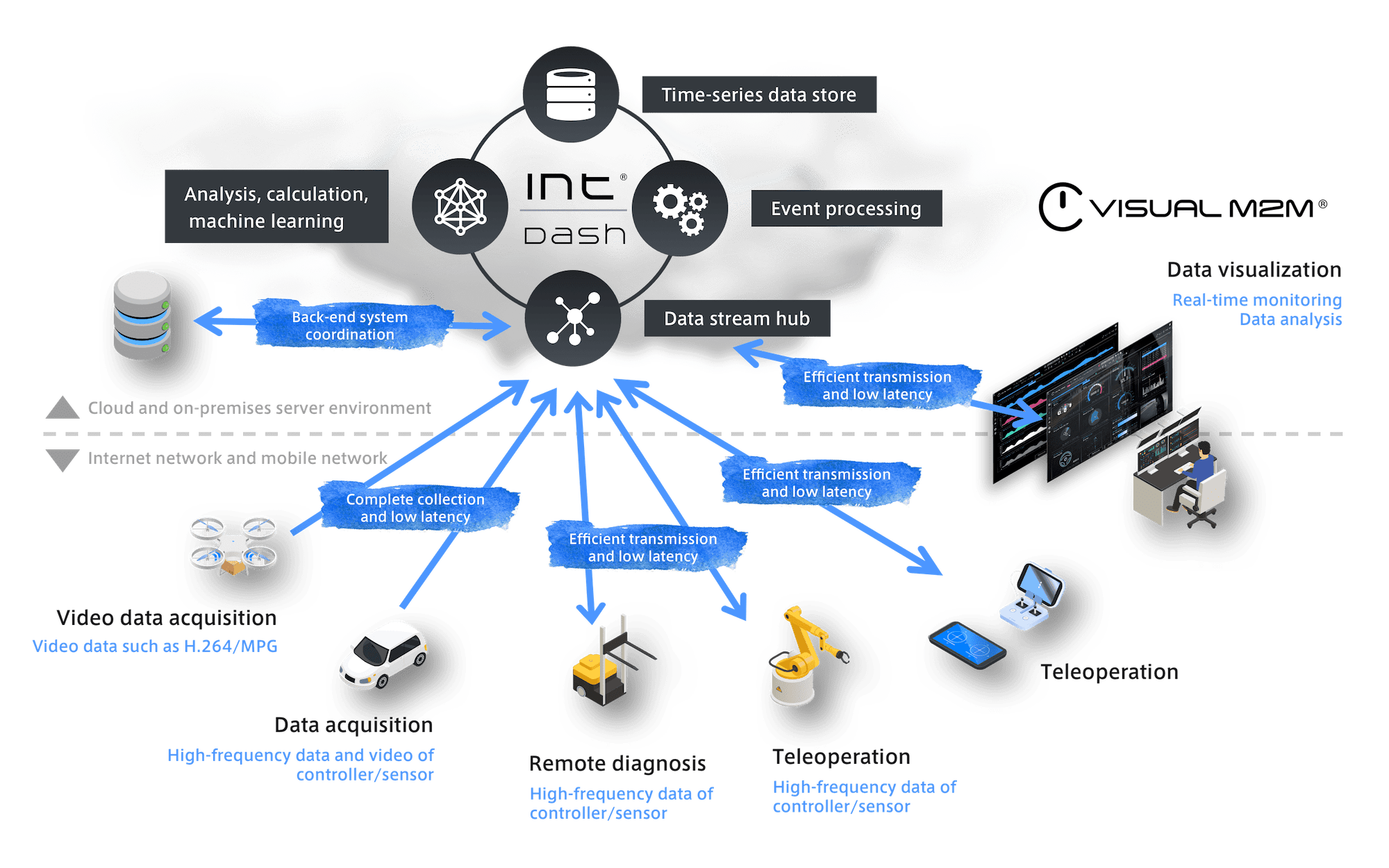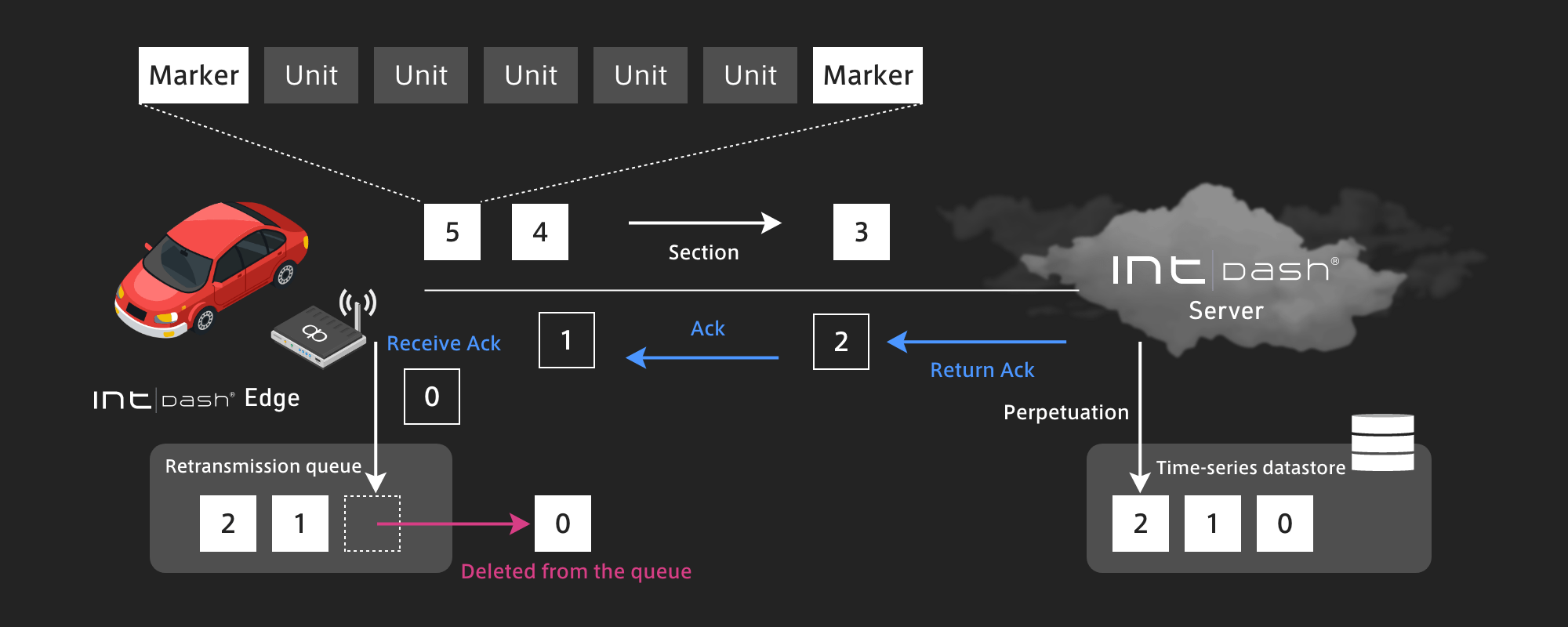About intdash
Overview of the intdash IoT platform

What is intdash?
intdash is a bidirectional data transmission platform that stably streams large volumes of time-series data generated at a high frequency of about every 1 to 100 milliseconds via a best effort network, such as mobile network, at high speed. INTDASH stands for INTeractive DAta Streaming Hub. This brand name is used for all the products and services that make up the platform.
intdash can mutually connect components that generate a large amount of data in a short time period such as automobiles, robots, industrial equipment, or control or visualization applications live via a mobile network or the Internet. Data that streams through intdash is saved as-is in the time-series datastore and can be used for visualization in Visual M2M and computer processing or machine learning in Analytics Services.
Data streaming pipeline enabled by intdash

Scenarios supported in intdash
intdash satisfies a variety of requirements for typical industrial IoT scenarios with high-frequency data streaming processing required in industrial IoT systems.
- Measurement and data acquisition during research and development and in the validation process
- Real-time monitoring and remote failure diagnosis of industrial instruments
- Remote operation of construction equipment, heavy equipment, robots, and other equipment
- And more
Features of intdash
intdash is designed to provide many-to-many bidirectional real-time streaming and perpetuation of all streaming data on an intermediary server. For example, if the network is instantaneously disconnected in an unstable network environment such as mobile network, the automatic data collection sequence completely collects the data and puts it in the server without losing any of the generated data. For intdash, we have developed iSCP (intdash Streaming Control Protocol), a proprietary protocol for data streaming, to provide both real-time streaming and perpetuation of data at the same time.
Development of iSCP (intdash Stream Control Protocol)
iSCP (intdash Stream Control Protocol) is our proprietary protocol used for internal communication in each module. iSCP is used for communication between the intermediary server and modules on edge devices and it provides the main functions of intdash such as excellent real-time performance, collection of all data, improvement of transmission efficiency, and rate control of transmitted data.
For more information on iSCP, see this white paper.
Timestamp management
When multiple data sources are handled, the availability and format of timestamps are different for each data source. intdash adds timestamps to data without timestamps and converts timestamps into the iSCP data format. This allows you to easily manage time-series data in an integrated way. In addition, the timestamp is broken down into the base time and the elapsed time and it is managed to facilitate the correction of synchronization losses between devices and comparison of data at different time points.
intdash maps media data such as video and audio to the same time axis to keep consistency with the timestamps of other data, based on the time information inherent to the video and audio data.

Support for data fusion
In the manufacturing industry, data is collected from a wide range of devices in the product development and validation processes, failure diagnosis, machine learning, and other processes. It would take an enormous amount of work to individually add timestamps and set the time for all data after data collection. intdash can transmit and manage data in many different formats in an integrated way through data fusion processing, which includes integrated timestamp processing and encapsulation of data in the same format.
Automatic collection of data lost in transmission
Remote data collection often uses unstable networks such as mobile networks or wireless LANs, which may result in missing data in transmission. When a network disconnection occurs, intdash queues data to the edge and automatically resends it when the network is restored. Data arrival management between the edge and the server ensures complete data collection even in an unstable network.


